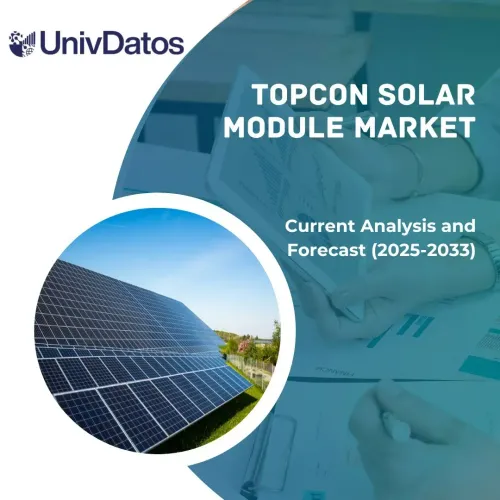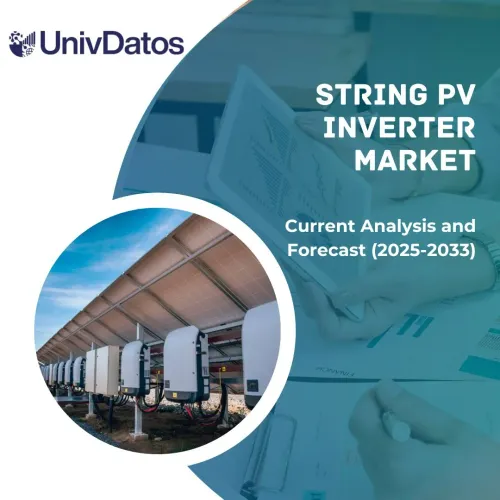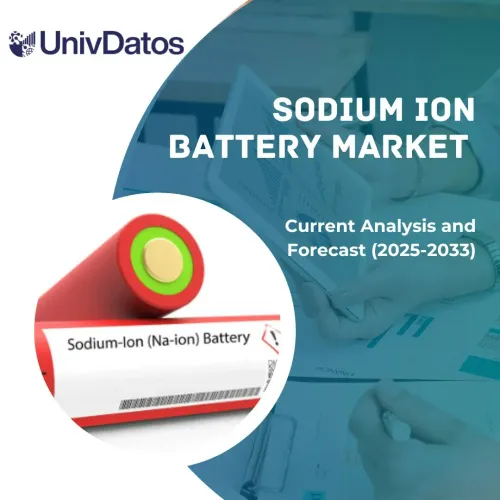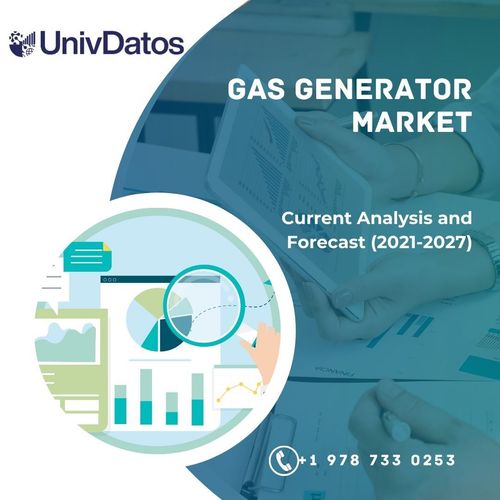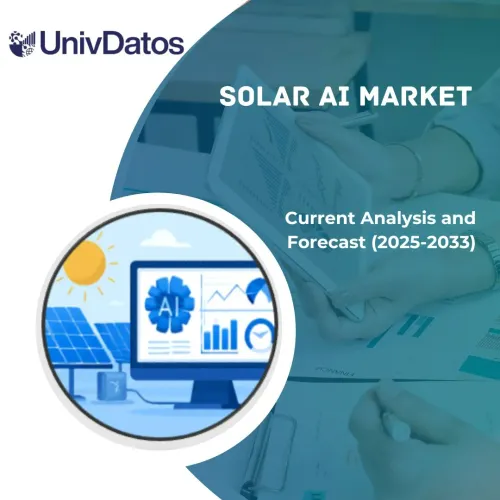- Strona główna
- O nas
- Branża
- Usługi
- Czytanie
- Kontakt
Rynek turbin wiatrowych MENA: bieżąca analiza i prognoza (2023-2030)
Nacisk na typ osi (pionowy i poziomy); Komponent (łopatka wirnika, gondola, generator, przekładnia i inne); oraz instalacja (przybrzeżna i lądowa); Kraj
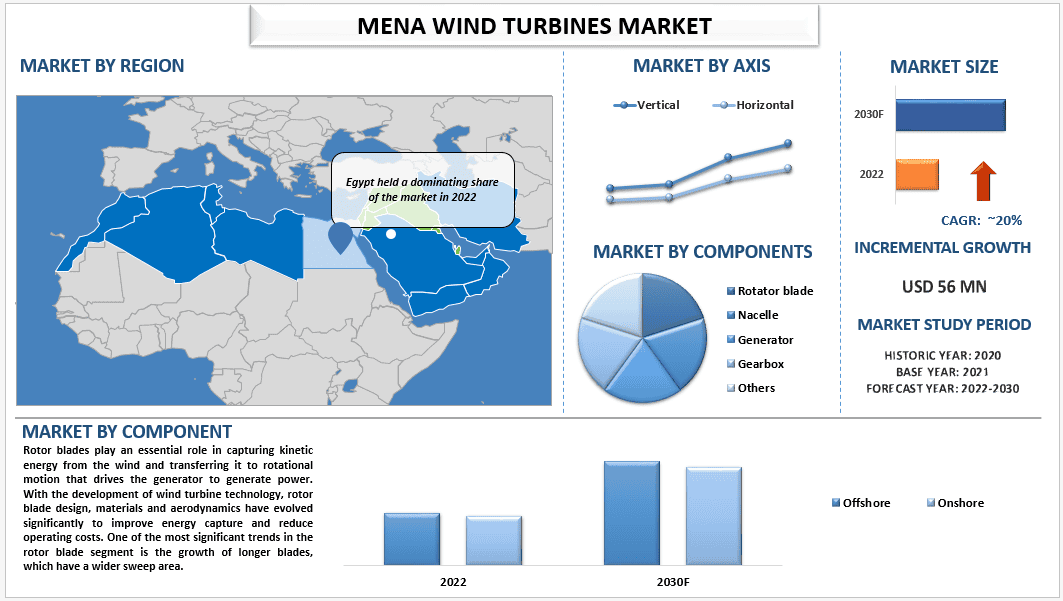
Oczekuje się, że rynek turbin wiatrowych MENA będzie rósł ze znaczącym CAGR na poziomie 20% w okresie prognozy.W ostatnich latach rynek turbin wiatrowych odnotował silny wzrost dzięki połączeniu czynników, które uczyniły wiatr kluczowym graczem w globalnym miksie energetycznym. Jednym z głównych powodów tego wzrostu jest rosnące uznanie wiatru jako czystej i odnawialnej alternatywy dla tradycyjnych paliw kopalnych. Rządy na całym świecie wyznaczają ambitne cele w zakresie energii odnawialnej, a turbiny wiatrowe odgrywają kluczową rolę w osiąganiu tych celów.Jednak w ostatnich latach wiele krajów w regionie wdrożyło plany zwiększenia udziału energii odnawialnej w swoich miksach energetycznych. ZEA dąży do 44% energii odnawialnej do 2050 r., a Arabia Saudyjska do 50% do 2030 r.To wsparcie polityczne dla rozwoju energetyki wiatrowej stworzyło środowisko sprzyjające rozwojowi energetyki wiatrowej, zachęcając do inwestycji i napędzając innowacje technologiczne.
Niektórzy z głównych graczy działających w Siemens Gamesa Renewable Energy, S.A.U., Vestas, GENERAL ELECTRIC, Suzlon Energy Limited, goldwind, Envision Group, NORDEX SE, ENERCON GmbH, Cox Energy Solar S.A., Gicon. Kilka fuzji i przejęć wraz z partnerstwami zostało podjętych przez tych graczy, aby ułatwić klientom korzystanie z zaawansowanych technologicznie i innowacyjnych produktów/technologii.
Informacje przedstawione w raporcie
„W oparciu o typ osi, rynek jest podzielony na pionowy i poziomy. Segment pionowy miał znaczący udział w rynku.”
W oparciu o typ osi, rynek jest podzielony na pionowy i poziomy. Segment pionowy miał znaczący udział w rynku. W miarę jak morskie farmy wiatrowe rozszerzają się na głębsze wody, mogą korzystać z silniejszych, bardziej stałych prędkości wiatru, co może skutkować wyższymi wskaźnikami generacji. W rezultacie, specjalistyczne konstrukcje turbin wiatrowych na morzu, fundamenty i metody instalacji są w dużym popycie, co prowadzi do wzrostu zapotrzebowania na rozwiązania offshore i usługi specyficzne dla offshore. Kolejnym rosnącym pionem jest rozwój technologii turbin wiatrowych. Postępy w projektowaniu i inżynierii turbin doprowadziły do bardziej wydajnych i niezawodnych turbin. Opracowano aerodynamikę łopat i układy napędowe, a także mechanizmy kontroli, które optymalizują wychwyt energii i zmniejszają wymagania konserwacyjne. Integracja technologii cyfrowych (czujniki i analityka predykcyjna) doprowadziła również do konserwacji opartej na stanie, co poprawia wydajność operacyjną i skraca przestoje.
„W oparciu o komponenty, rynek jest podzielony na łopatkę wirnika, gondolę, generator, przekładnię i inne. Segment łopatki wirnika miał znaczący udział w rynku.”
W oparciu o komponenty, rynek jest podzielony na łopatkę wirnika, gondolę, generator, przekładnię i inne. Segment łopatki wirnika miał znaczący udział w rynku. Łopatki wirnika zyskały ogromną popularność i wzrost będzie miał znaczny udział w rynku w okresie prognozy. Łopatki wirnika odgrywają istotną rolę w wychwytywaniu energii kinetycznej z wiatru i przenoszeniu jej na ruch obrotowy, który napędza generator do wytwarzania energii. Wraz z rozwojem technologii turbin wiatrowych, konstrukcja, materiały i aerodynamika łopat wirnika ewoluowały znacząco, aby poprawić wychwyt energii i obniżyć koszty eksploatacji. Jednym z najważniejszych trendów w segmencie łopat wirnika jest wzrost dłuższych łopat, które mają szerszy obszar zamiatania. Pozwala to turbinom na wychwytywanie większej ilości energii z większej objętości powietrza, co skutkuje wyższą generacją mocy, szczególnie w wietrznych regionach.
Zasięg raportu dotyczącego rynku turbin wiatrowych MENA
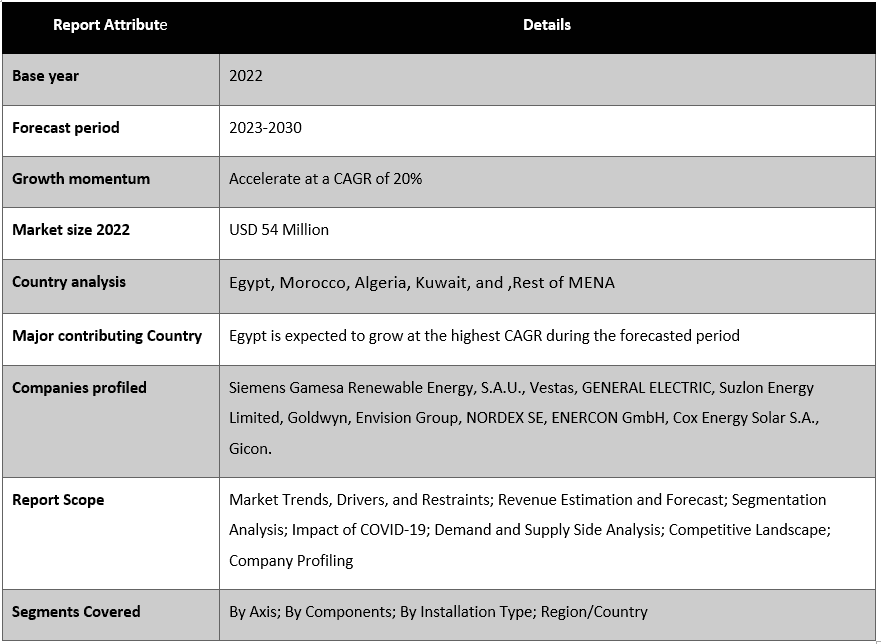
„Egipt zdominował rynek.”
Przyjęcie turbin wiatrowych w Egipcie odnotowało niezwykły wzrost w ostatnich latach. Ten wzrost popularności można przypisać kilku czynnikom. Po pierwsze, zaangażowanie narodu w odnawialne źródła energii doprowadziło do znacznych inwestycji w infrastrukturę energetyki wiatrowej. Korzystna lokalizacja geograficzna Egiptu, zwłaszcza w regionach takich jak Zatoka Sueska i Morze Czerwone, zapewnia stałe i solidne zasoby wiatru, co czyni go idealnym środowiskiem dla projektów energetyki wiatrowej. Ponadto inicjatywy rządu mające na celu przyciągnięcie zagranicznych inwestycji i promowanie krajowych projektów energii odnawialnej pobudziły rozwój farm wiatrowych w całym kraju. To przejście na energię wiatrową nie tylko przyczynia się do celów zrównoważonego rozwoju środowiskowego Egiptu, ale także pomaga zdywersyfikować jego miks energetyczny, zmniejszając zależność od paliw kopalnych i zwiększając bezpieczeństwo energetyczne. W miarę jak przyjęcie turbin wiatrowych nadal nabiera rozpędu, Egipt jest na obiecującej drodze do bardziej ekologicznej i zrównoważonej przyszłości energetycznej
Powody, dla których warto kupić ten raport:
- Badanie obejmuje szacowanie wielkości rynku i analizę prognozowania zweryfikowaną przez uwierzytelnionych kluczowych ekspertów branżowych.
- Raport przedstawia szybki przegląd ogólnej wydajności branży na pierwszy rzut oka.
- Raport obejmuje dogłębną analizę wybitnych podmiotów z branży, ze szczególnym uwzględnieniem kluczowych danych finansowych, portfeli produktów, strategii ekspansji i ostatnich wydarzeń.
- Szczegółowe badanie czynników napędowych, ograniczeń, kluczowych trendów i możliwości występujących w branży.
- Badanie kompleksowo obejmuje rynek w różnych segmentach.
- Dogłębna analiza branży na poziomie regionalnym.
Opcje dostosowywania:
Rynek turbin wiatrowych MENA można dodatkowo dostosować do wymagań lub jakiegokolwiek innego segmentu rynku. Poza tym UMI rozumie, że możesz mieć własne potrzeby biznesowe, dlatego skontaktuj się z nami, aby uzyskać raport, który całkowicie odpowiada Twoim wymaganiom.
Spis treści
Metodologia badań dla analizy rynku turbin wiatrowych MENA (2023-2030)
Analiza historycznego rynku, oszacowanie obecnego rynku i prognozowanie przyszłego rynku rynku turbin wiatrowych MENA były trzema głównymi krokami podjętymi w celu stworzenia i analizy przyjęcia turbin wiatrowych MENA w głównych krajach. Przeprowadzono wyczerpujące badania wtórne w celu zebrania historycznych danych rynkowych i oszacowania obecnej wielkości rynku. Po drugie, aby zweryfikować te spostrzeżenia, wzięto pod uwagę liczne ustalenia i założenia. Ponadto przeprowadzono również wyczerpujące wywiady pierwotne z ekspertami branżowymi z całego łańcucha wartości rynku turbin wiatrowych MENA. Po założeniu i walidacji danych rynkowych poprzez wywiady pierwotne, zastosowaliśmy podejście odgórne/oddolne do prognozowania pełnej wielkości rynku. Następnie zastosowano metody podziału rynku i triangulacji danych, aby oszacować i przeanalizować wielkość rynku segmentów i podsegmentów, do których odnosi się branża. Szczegółowa metodologia jest wyjaśniona poniżej:
Analiza historycznej wielkości rynku
Krok 1: Dogłębne badanie źródeł wtórnych:
Przeprowadzono szczegółowe badanie wtórne w celu uzyskania historycznej wielkości rynku rynku turbin wiatrowych MENA za pośrednictwem wewnętrznych źródeł firm, takich jakraporty roczne i sprawozdania finansowe, prezentacje wyników, komunikaty prasowe itp.,i źródła zewnętrzne, w tymczasopisma, wiadomości i artykuły, publikacje rządowe, publikacje konkurencji, raporty sektorowe, bazy danych stron trzecich i inne wiarygodne publikacje.
Krok 2: Segmentacja rynku:
Po uzyskaniu historycznej wielkości rynku rynku turbin wiatrowych MENA, przeprowadziliśmy szczegółową analizę wtórną w celu zebrania historycznych informacji rynkowych i udziałów dla różnych segmentów i podsegmentów dla głównych regionów. Główne segmenty są zawarte w raporcie jako typ osi, komponenty i instalacja. Przeprowadzono dalsze analizy na poziomie kraju, aby ocenić ogólne przyjęcie modeli testowych w tym regionie.
Krok 3: Analiza czynnikowa:
Po uzyskaniu historycznej wielkości rynku różnych segmentów i podsegmentów, przeprowadziliśmy szczegółowąanalizę czynnikowąw celu oszacowania obecnej wielkości rynku rynku turbin wiatrowych MENA. Ponadto przeprowadziliśmy analizę czynnikową z wykorzystaniem zmiennych zależnych i niezależnych, takich jak typ osi, komponenty i instalacja rynku turbin wiatrowych MENA. Przeprowadzono dokładną analizę scenariuszy popytu i podaży, biorąc pod uwagę najlepsze partnerstwa, fuzje i przejęcia, ekspansję biznesu oraz wprowadzenia produktów na rynku turbin wiatrowych MENA na całym świecie.
Szacowanie i prognoza obecnej wielkości rynku
Szacowanie obecnej wielkości rynku:W oparciu o praktyczne spostrzeżenia z powyższych 3 kroków, dotarliśmy do obecnej wielkości rynku, kluczowych graczy na rynku turbin wiatrowych MENA i udziałów rynkowych segmentów. Wszystkie wymagane udziały procentowe, podziały i podziały rynku zostały określone przy użyciu wyżej wymienionego podejścia wtórnego i zostały zweryfikowane poprzez wywiady pierwotne.
Szacowanie i prognozowanie:Do oszacowania i prognozowania rynku przypisano wagi do różnych czynników, w tym czynników napędowych i trendów, ograniczeń i możliwości dostępnych dla interesariuszy. Po przeanalizowaniu tych czynników zastosowano odpowiednie techniki prognozowania, tj. podejście odgórne/oddolne, aby dotrzeć do prognozy rynkowej na rok 2030 dla różnych segmentów i podsegmentów na głównych rynkach. Metodologia badawcza przyjęta do oszacowania wielkości rynku obejmuje:
- Wielkość rynku branży, pod względem przychodów (USD) i wskaźnika adopcji rynku turbin wiatrowych MENA na głównych rynkach krajowych
- Wszystkie udziały procentowe, podziały i podziały segmentów i podsegmentów rynku
- Kluczowi gracze na rynku turbin wiatrowych MENA pod względem oferowanych produktów. Ponadto, strategie wzrostu przyjęte przez tych graczy, aby konkurować na szybko rozwijającym się rynku
Walidacja Wielkości i Udziału w Rynku
Badania Pierwotne:Przeprowadzono dogłębne wywiady z Kluczowymi Liderami Opinii (KOL), w tym z Dyrektorami Najwyższego Szczebla (CXO/Wiceprezesami, Szefami Sprzedaży, Szefami Marketingu, Szefami Operacyjnymi, Szefami Regionalnymi, Szefami Krajowymi itp.) we wszystkich głównych regionach. Następnie podsumowano wyniki badań pierwotnych i przeprowadzono analizę statystyczną w celu udowodnienia postawionej hipotezy. Dane z badań pierwotnych zostały skonsolidowane z ustaleniami wtórnymi, przekształcając informacje w praktyczne wnioski.
Kluczowi Interesariusze Rynku Turbin Wiatrowych w Regionie MENA
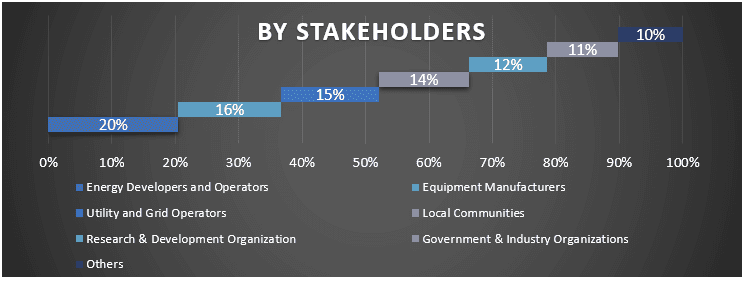
Inżynieria Rynku
Zastosowano technikę triangulacji danych w celu zakończenia ogólnej estymacji rynku i uzyskania precyzyjnych danych statystycznych dla każdego segmentu i podsegmentu rynku turbin wiatrowych MENA. Dane podzielono na kilka segmentów i podsegmentów po przestudiowaniu różnych parametrów i trendów w obszarach typu osi, komponentów i instalacji rynku turbin wiatrowych MENA.
Główny cel badania rynku turbin wiatrowych MENA
W badaniu wskazano obecne i przyszłe trendy rynkowe rynku turbin wiatrowych MENA. Inwestorzy mogą uzyskać strategiczne spostrzeżenia, aby oprzeć swoje decyzje inwestycyjne na analizie jakościowej i ilościowej przeprowadzonej w badaniu. Obecne i przyszłe trendy rynkowe determinują ogólną atrakcyjność rynku na poziomie regionalnym i krajowym, zapewniając platformę dla uczestników przemysłu do wykorzystania niewykorzystanego rynku i czerpania korzyści z przewagi pierwszego gracza. Inne cele ilościowe badań obejmują:
- Analizę obecnej i prognozowanej wielkości rynku turbin wiatrowych MENA pod względem wartości (USD). Ponadto analizę obecnej i prognozowanej wielkości rynku różnych segmentów i podsegmentów
- Segmenty w badaniu obejmują obszary typu osi, komponentów i instalacji
- Definicja i analiza ram regulacyjnych dla branży turbin wiatrowych MENA
- Analiza łańcucha wartości z udziałem różnych pośredników, wraz z analizą zachowań klientów i konkurencji w branży
- Główne kraje regionów objętych badaniem to Arabia Saudyjska, ZEA, Egipt, Turcja i reszta regionu MENA
- Profile firm na rynku turbin wiatrowych MENA oraz strategie wzrostu przyjęte przez graczy rynkowych w celu utrzymania się na szybko rozwijającym się rynku
- Dogłębna analiza regionalna branży
Powiązane Raporty
Klienci, którzy kupili ten przedmiot, kupili również


